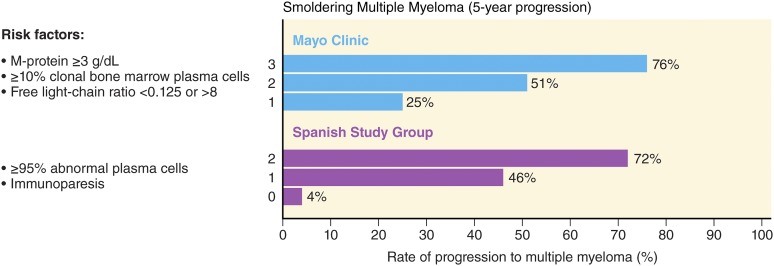Figure 1.
Risk stratification schemes for smoldering multiple myeloma. Two major models for risk stratification are the Mayo Clinic and the PETHEMA models. The Mayo Clinic model focuses largely on serum protein abnormalities. For smoldering myeloma patients, the following features are considered to be adverse risk factors: >3 g/dL M protein, an FLC ratio outside the reference range of 0.125 to 8, and >10% BMPCs. The PETHEMA model uses multiparametric flow cytometry of bone marrow aspirates to differentiate aberrant from normal plasma cells (aPC versus BMPC). Plasma cells characteristically express CD138 and intense (bright) CD38. The features of aPCs included decreased CD38 expression, expression of CD56, and the absence of CD19 and/or CD45. In their study, smoldering multiple myeloma patients with >95% phenotypically aPC of total BMPC (ie, >95% aPC/BMPC) at diagnosis had a significantly higher risk of multiple myeloma progression. In addition, they characterized uninvolved immunoglobulins in peripheral blood in relation to risk of progression to multiple myeloma. For smoldering multiple myeloma patients, the risk factors in their model are >95% aPCs/BMPC and immunoparesis. Adapted from Landgren et al.49

